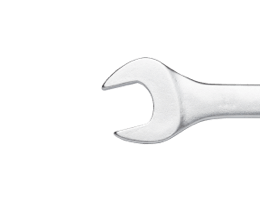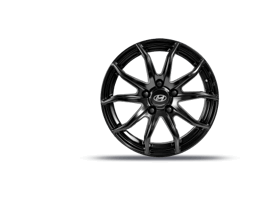12 Hyundai safety features that make driving today safer than ever.
Hyundai is always on the lookout for ways to make driving not only more enjoyable, but also safer. Our researchers and engineers are constantly working to develop technologies that minimise the risk our drivers face on the road.
By now you probably know all about traditional safety features like seat belts, airbags, anti-lock brakes and traction control, but what are some of the newer safety features that are making Hyundai vehicles safer than ever?
Here, we run through 12 you should know about.
1. FCA – Forward Collision-Avoidance Assist.
If the car ahead of you is too close for comfort, FCA gives you a visual and audio warning, helping you to avoid rear-end collisions. In some Hyundai vehicles, FCA with City/urban/Interurban/Pedestrian and Car & Pedestrian can sense pedestrians and cyclists travelling in front and automatically apply brakes.
2. BSD – Blind-Spot Detection.
When another vehicle is situated in your blind spot, BSD – with the help of radar sensors in your rear bumper – gives you an audio and visual warning, reminding you not to suddenly change lanes. Further, Blind-Spot Collision Avoidance Assist (BCA-R) will provide steering intervention if required.
3. RCT – Rear Cross Traffic Alert
When you reverse out of a parking space, your rear sensors will monitor approaching traffic and gives you an audio and visual warning if a vehicle is approaching, helping you to avoid parking-related accidents.
5. LCA – Lane Change Assist
While LKA warns you when you begin to change lanes without indicating, LCA kicks in when you do indicate to change lanes. Rear sensors activate to scan for any approaching vehicles in your blind spots and give an audio and visual warning if there is a potential to safe merging.
6. HBA – High Beam Assist
When you’re driving on unlit roads at night, HBA scans the road ahead for lights and automatically switch between high and low beam depending on what is in front of you.
7. SCC – Smart Cruise Control
While regular cruise control keeps your vehicle at a set speed, SCC uses the mounted camera or front radar sensor to monitor the speed of the vehicle ahead. If you get too close to the vehicle, it brakes to maintain a safe distance before accelerating back up to your pre-set speed when it is safe to do so.
8. DAA – Driver Attention Alert
Fatigue is one of the major causes of accidents on the road. DAA helps to detect the signs of driver fatigue by using your vehicle’s mounted camera to analyse steering corrections and driving patterns. If the patterns are consistent with driver fatigue, it gives you an alert to advise you to take a break.
9. ROA – Rear Occupant Alert
When you leave and lock your vehicle, ROA uses an ultrasonic sensor to detect movement in the car. If movement is detected, it sounds your horn and flashes your headlights to make sure no one is left behind.
10. SVM – Surround View Monitor
If you have items, such as luggage, blocking your rear-view, or if you are in a tight parking spot with restricted vision of what’s around you, SVM is incredibly useful. It provides you with a 360-degree bird’s eye view of your surroundings via a front monitor.
11. SEA – Safe Exit Assist
SEA uses the front and rear sensors to check for any approaching hazards – for example, an approaching vehicle or cyclist – and gives an alert that it may be dangerous to exit the vehicle. If you have children and have the doors on child safety lock, the SEA system intervenes and prevents the doors from being unlocked.

12. ASPAS – Advanced Smart Parking Assist System
It’s not uncommon for drivers to be somewhat uncomfortable with parking, particularly when it comes to reverse and parallel parking. ASPAS is a steering assist system that helps you to manoeuvre in and out of parking spots – you simply select Reverse Parking (90°), Parallel Parking, or Parallel Exit mode, and then your vehicle does the rest.
Disclaimer.
Safety features vary according to each vehicle. Please refer to your owner manual for specific vehicle details.




